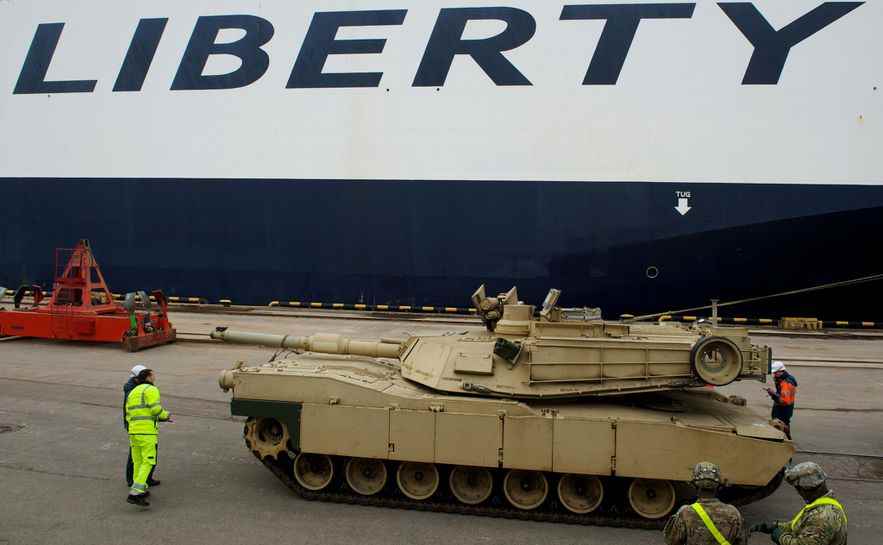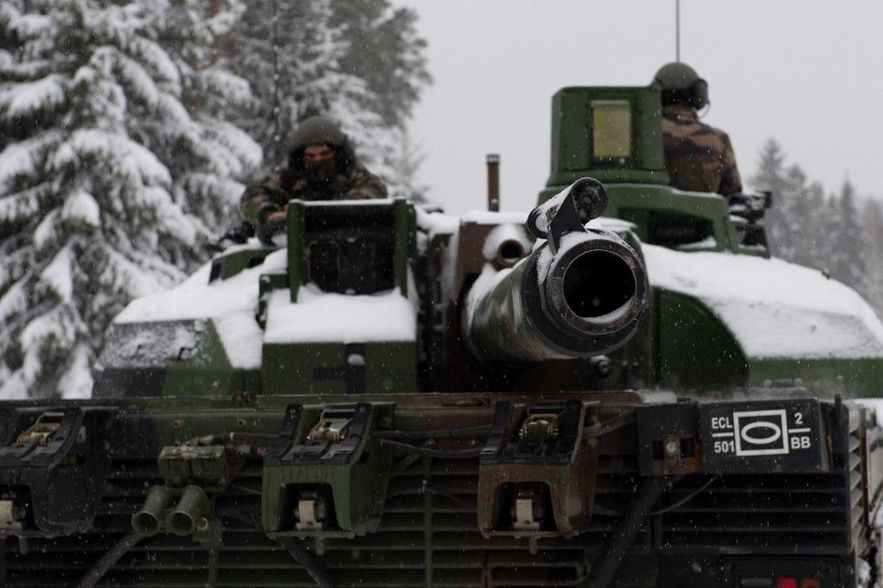Could a delivery by the West of 300 of their precious combat tanks change the course of the war? The Chief of Staff of the Ukrainian army is convinced of this. “I know how to beat the enemy, but I need resources, I need 300 tanks,” Valeri Zalouzhny said in December. in one of his rare interviews. “The longer such a decision is delayed, the more casualties there will be, the more civilian deaths there will be,” Ukrainian Foreign Minister Dmytro Kouleba has since added.
While all weapons count for fighting a war, some are more formidable than others. The American Himars rocket launchers, with a range of 80 kilometers for precision to the nearest meter, have terribly undermined the logistical lines of the Russian forces, forced to retreat in September in the Kharkiv region and in November in that of Kherson . Ukraine’s use of Western, and not just Soviet, tanks could be a new turning point in the war.
So far, the Europeans and the Americans have refused to take this step, with the main argument being to avoid any escalation with Russia. But the latter seems determined to continue the war with its neighbour, disdaining the negotiating table. After months of reluctance, the psychological barrier of Westerners could soon yield. London said it was ready to send its Challenger 2 tanks, recognizing that this type of gear could “provide a revolutionary capability to the Ukrainians”.
Poland, which has already delivered 200 Soviet tanks that it still had in its fleet, also said it was ready to send its German Leopard 2s, as did Finland, as part of “an international coalition”. This tank sits at the top of the shopping list submitted by kyiv to Westerners. Built in more than 2,000 units, it equips 13 European armies. Multiple donations would make it possible to constitute several battalions counting forty or fifty tanks.
Russian T-72B3M tanks parade in Red Square for Victory Day in central Moscow on May 9, 2022.
© / AFP
“They were designed to dominate the T72 and the T80, the main Soviet tanks, they see better, shoot further and faster than them, specifies Marc Chassillan, consultant specializing in armored vehicles. With these vehicles for close combat, the Ukrainians could form full tactical groups, including German Gepards for air cover, and armored Marder infantry [NDLR : Berlin en a promis 40] and Bradley [Washington en a promis 50]. What, in coordination with the artillery fire, to break through the lines of the enemy and reach the tipping point of the battle.
“The heavy tank is the major machine on the land battlefield, capable, by a maneuver, of carrying direct fire against the enemy. But it is only valid if it is used in a combined arms combat context, with d other armored vehicles to accompany him, adds Yann Boivin, former lieutenant-colonel in the French army and host of the blog Blablachars. French AMX-10 RC battle groups can be added to such battle groups to carry out reconnaissance on the enemy flanks.” France broke a first psychological lock by promising in early January in kyiv these “light tanks”, on wheels, whose however, the armor does not allow them to hold out in frontal combat like a heavy tank.
Germany still reluctant
But before such operations materialize, there is still a long way to go. Germany must already give the green light to the delivery of Leopard 2, whether its own or those of its allies – the contracts require Berlin’s agreement for any re-export. But the population, still marked by the Nazi ravages of the Second World War, is reluctant. 50% of Germans are against the delivery of battle tanks to Ukraine, according to a recent INSA survey for the daily Picture (38% for).
Despite pressure from his government’s environmental partners, Social Democratic Chancellor Olaf Scholz maintains the condition that Washington also deliver copies of its heavy tank, the Abrams M1. The next meeting between military supporters of Ukraine, on January 20, at the American base in Ramstein, Germany, could coincide with an extension of arms deliveries to heavy tanks from Berlin.

An American Abrams tank is delivered in Riga, Latvia on March 9, 2015.
© / afp.com/ILMARS ZNOTINS
In the event of a German green light, the hardest part would remain for kyiv and its allies, because there are several generations of the flagship “panzer” of German industry, from the Leopard 2A4 to the 2A7, equipped with the latest technologies, and different versions from one army to another. “The Ukrainians would not find themselves there with a disparate fleet, it is better 50 copies of 2A4 for them, especially since it is these models that the Finns and the Poles are ready to deliver to them, underlines Marc Chassillan. A package homogeneous will facilitate their passage through the workshop, because they all need an overhaul, and the training of Ukrainian maintainers.”
That of the crews – four people per Leopard – should also take time. “If the decision falls this month, we will have to wait at least until the end of spring before seeing them on the front, if not later, specifies Yann Boivin. Even with accelerated training, a crew needs time to master the specifics of its tank and its use within an armored brigade capable of carrying out an offensive. Sending different types of Western tanks could represent a real logistical headache for kyiv.”

A French Leclerc tank, during a military exercise in Estonia, February 5, 2022.
© / ALAIN JOCARD / AFP
The United Kingdom, for its part, could only send about fifteen of its Challengers, which it no longer produces. It is the only European country to have one, for a fleet of 227 copies, of which 148 are already intended for modernization. “It will be above all a political blow for London, because this tank is fragile, very heavy, and its rifled gun can only fire specific British ammunition”, points out Marc Chassillan.
Ukrainians would also appreciate receiving French Leclercs, designed to overpower Soviet tanks in combat. They have already made the request, as confirmed in November by the ambassador to Ukraine, Etienne de Poncins, before the Defense Committee of the National Assembly. “Unlike the Leopards and the Abrams, it has an automatic loader and can fire while rolling, but this requires more advanced training for its crew of three,” says Yann Boivin.
As for London with its Challenger, Paris only has 200 and no longer produces them. “France does not have much to provide, a certain number of its Leclercs must go back to the factory to be modernized, others are deployed in Romania (13) or are used for the instruction of pilots, and a large number need to be overhauled, so there are few available for war,” said Marc Chassillan. Such a decision, above all political, would therefore not be neutral for the French army.
